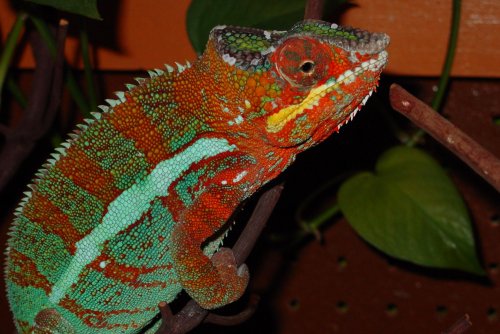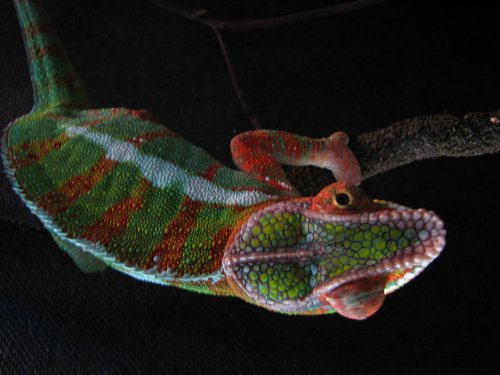robmd1
Avid Member
exactly different locals, they don't come across each other in nature, keep them pure
I didnt know there was fences around each local and it is an island hmmm...
Follow along with the video below to see how to install our site as a web app on your home screen.
Note: This feature may not be available in some browsers.
exactly different locals, they don't come across each other in nature, keep them pure



Other threads that have pictures of cross-locals:
https://www.chameleonforums.com/ambilobe-x-nosy-38884/
https://www.chameleonforums.com/mcnasty-his-nameless-brother-38014/
https://www.chameleonforums.com/mclovin-sgt-pepper-baby-quad-27213/
https://www.chameleonforums.com/mee...ld-sambava-x-ambanja-panther-chameleon-36592/
https://www.chameleonforums.com/update-my-boy-spyro-49251/
If you want to read debates about the right or wrongness of panther cross breeding, check these threads (or start your own, rather than take this thread off topic):
https://www.chameleonforums.com/breeding-true-bloodlines-27185/
https://www.chameleonforums.com/panther-hybrids-329/
https://www.chameleonforums.com/cross...panthers-31504
https://www.chameleonforums.com/crossbreeding-25079/
https://www.chameleonforums.com/why-n...ambilobe-7124/
https://www.chameleonforums.com/why-o...08/#post378125
https://www.chameleonforums.com/cross-breeding-40955
There seems to be a general misunderstanding about the definition of a locale, the barriers or lack there of between said locales, and what a barrier or lack there of between said locales means. I'm not trying to start a debate regarding the ethics or considerations of crossing locales, my opinion and rational for that opinion are fairly well known, but I do think its important to clarify some of the misconceptions that have seemed to have surfaced in this thread, as they are important to anyone looking to understand what locales are or how they are maintained in the wild.
From a general terminology standpoint, crossing different locales of Furcifer pardalis is in fact a form of hybridization or cross breeding. It does not need to be between different species to technically be hybridizing or cross breeding, it is simply the interbreeding of two groups, whether those groups be species, subspecies, populations, localities, breeds, etc.. By interbreeding two locales, you have hybridized or crossed the locales.
A locality is simply the subset of individuals from the entire population of a species that are found in a particular subsection of the range of the entire species. When a locality name is given to specimens from a given location it is typically because the individuals at that location tend to exhibit a set of characteristic that differentiate them from other named locales. Typically this set of characteristics is genetically coded resulting in a high likelihood of the next generation showing a similar set of characters. In the case of F. pardalis, these characteristics typically are a general combination of colors and patterns shown in the males.
While the range of some localities are easily defined, particularly when the locality is an island such as Nosy Be, Nosy Faly, Nosy Mitsio, etc., not all localities have as clear or defined boarders. For island localities, obviously the surrounding water provides a barrier to the exchange of genetic material with other localities. In some cases stretches of rivers, mountains, uninhabitable environments, etc., can similarly serve as a barrier to the exchange of genetic material. Finally, in some cases, the barrier to the exchange of genetic material between localities is simply distance. An important thing to note, however, is that these barriers are not perfect barriers and there is still genetic exchanges between locales, even to island locales. This exchange of genetic material is called gene flow.
While genetic material is still exchanged between localities, the fact remains that these localities maintain differing gene frequencies that result in the particular color characteristics. This is because this exchange in genetic material is done at such a low level that the localities maintain their characteristic look. This is true even between localities with less effective barriers (i.e. distance rather than a physical barrier).
There seems to be the most misunderstanding regarding cases of mainland locales where there are ineffective natural barriers and the majority of the limitation in gene flow is distance. In these cases, what ends up happening is that a continuum between locales is seen. This occurs because individuals do not move long distances in their generation to breed. If locale A and B are 100km away from each other and each individual only travels 5km in their generation to breed, the overall genetic contribution from locality A is all but washed out by the time any genetic material travels from the center of it's locality to the center of locality B. This is because each parent only gives 1/2 of their genes and it would take 20 generations any contribution from locale A to reach locale B. The result is that there is no change to the gene frequencies of each population even though there is gene flow.
The thing that people seem to misunderstand is gene flow and the exchange of genetic material on this level is completely different than taking an animal from Ambilobe and an animal from Ambanja and breeding them. This does not occur in the wild and arguing that there is no difference simply shows a complete misunderstanding of population genetics and gene flow. Saying there is no fence between locales as a justification for such hybridization being natural shows a similar lack of understanding of these principles. While the right of a keeper to perform such hybridizations in captivity is completely different, no one should ever claim such hybrids are natural or try to use the lack of effective barriers to gene flow as justification for such hybrids occurring naturally.
Obviously this goes back to the issue of how you then define each locale if no geographic barrier exists and distance is the driving genetic barrier. The important thing to remember is that a locality is simply where an animal came from. Our concept of a locality as far as what they look like, however, is simply a representation of what animals from a particular point in the natural continuum look like. While a certain amount of variation at each point is seen, the further you travel away from that point, the more variation you will observe. Therefore, within a limited range of that particular point, you would not expect to see a lot of variation that wouldn't simply be explained by natural in-location variation. Our designation of localities is based primarily on the assumption that an animal exported from a given locale was collected within a range of that locale that would minimize that additional observed variation. When exporter's labels prove unreliable, however, our designation is based on categorizing the animal based on its features and the range we know to be observed within a reasonable range of each given locale.
I'm sure that may have confused a lot of people but hopefully it makes sense to some.
Chris
So Chris, are you saying that crosses never occur in nature or that certain crosses simply cannot happen? I'm a little confused as you said that there is gene flow from one locale to another, but then you say "no one should ever claim such hybrids are natural or try to use the lack of effective barriers to gene flow as justification for such hybrids occurring naturally."
OR are you just saying that the arguments in this thread are backed by false information?
I don't think females have a choice in the matter. I would think the idea of survival of the fittest would apply, the biggest and strongest mate, not most colorful, at least most of the time.
A lot of times color is an excellent sign of health. We see it all the time here on the forum where people have dull, sickly animals. Usually the most beautiful male is also the healthiest.